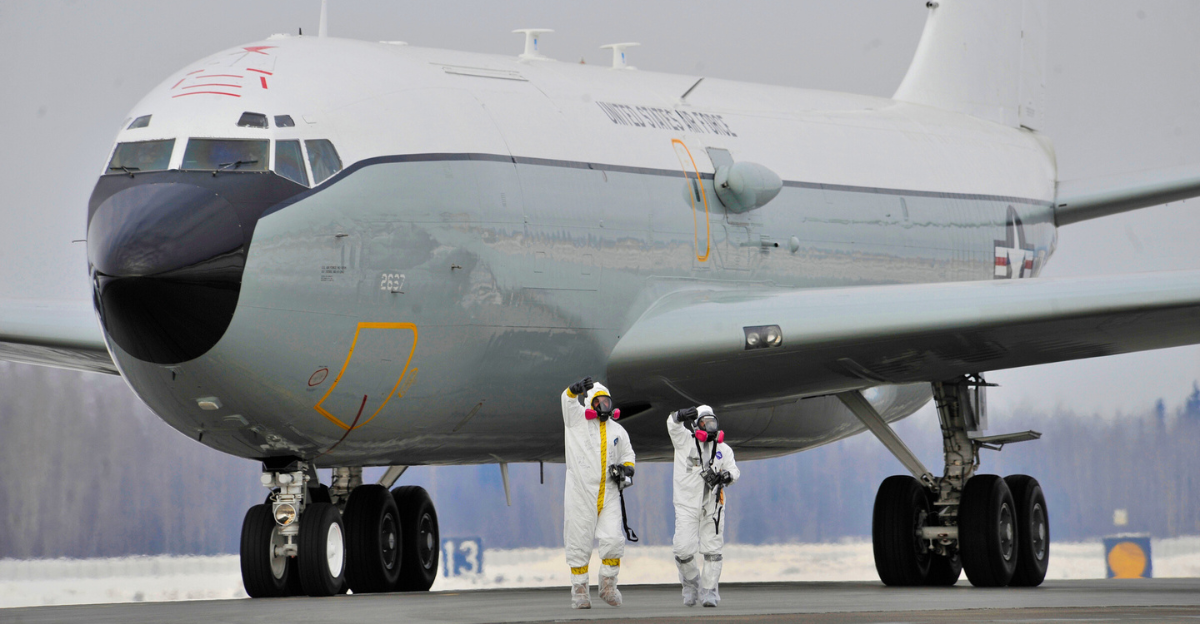
Over 8,000 small satellites now orbit Earth as part of SpaceX’s Starlink network – about two-thirds of all active satellites. This sprawling constellation has reshaped global communications and drawn intense military scrutiny.
In Ukraine, Starlink enabled real-time drone operations and battlefield communications that gave defenders a decisive edge. But its ubiquity creates a new vulnerability: a civilian system is now treated as critical wartime infrastructure. Nations are racing to counter what has become a dual-use asset.
Military Threat

Meanwhile, Chinese defense researchers have launched an unprecedented study of Starlink’s weaknesses. In just three years, they published dozens of technical analyses on how to neutralize the constellation.
An AP review found nearly all of the 64 Starlink-focused papers appeared after Russia invaded Ukraine. Authors at China’s premier military institutes warn that integrating Starlink with U.S. forces makes it a “security threat” in space and cyber domains.
Prestigious teams – from the National University of Defense Technology to the state cyber response group – are mapping out every vulnerability in the network’s design and deployment.
Ukrainian Catalyst

On the battlefield, Ukraine’s forces have shown both Starlink’s power and its risk. By mid-2025 Kyiv had received over 50,000 Starlink dishes, keeping drones and front-line troops connected through heavy jamming.
Then a rare 2½-hour global outage hit Starlink, underscoring that dependence on any single system is dangerous. Drone commander Robert Brovdi reported: “Combat missions were performed without a (video) feed”.
OCHI network founder Oleksandr Dmitriev warned bluntly: “If connection to the internet is lost…the ability to conduct combat operations is practically gone”. The incident became a wake-up call that space-based comms, while game-changing, introduce a single point of failure.
Beijing’s Response

Beijing took note. In 2023, researchers at China’s National Defense University ran simulations showing Starlink satellites could deliver “round-the-clock coverage” even over Beijing.
They reported that Starlink’s global reach “is improving steadily and at high speed”, meaning this foreign network could potentially observe Chinese territory at any moment.
Alarmed by the surveillance capability, Chinese military planners immediately began studying countermeasures. The realization that an American-controlled constellation could spy on China at will sparked a flurry of action in PLA research labs.
Submarine Lasers

Here’s where it gets interesting. In 2024 a Chinese naval engineering paper proposed a bold solution: equip stealth submarines with megawatt-class laser weapons to fry Starlink satellites from below. The subs would surface a retractable “optoelectronic mast” that raises a directed-energy laser at a passing satellite, then submerge for cover.
The authors pointed out that traditional anti-satellite rockets are easy to track: “Missile launches are often accompanied by long trails of smoke…conducting the attack from a surface location can easily expose one’s own position, leading to destruction…This is ‘too risky’,” they wrote.
Underwater laser subs, by contrast, could strike with impunity – a startling twist in the new space arms race. (“Missile launches…long trails of smoke…This is ‘too risky,’” Wang Dan’s team wrote.)
Supply Chain

Chinese analysts even studied the Starlink supply chain for weak points. In 2023 a government cyber response team mapped out every part of the network’s production – from SpaceX’s assembly plants to the 140+ tier-one suppliers worldwide.
They warned that with so many layers of vendors, “the supervision for cybersecurity is limited”.
In practice, this means China could target the weakest links: a chip maker in Asia, software vendors in Europe, or a ground station component.
By attacking Starlink’s factories or code base, an adversary might disrupt satellites without ever firing a missile – a dark horse tactic in high-tech warfare.
Ion Thrusters

Another PLA study turned to space itself. In late 2023, engineers proposed launching China’s own “hunter” satellites to stalk Starlink craft. These pursuit satellites would fly in close formation, gathering intel or even carrying destructive payloads.
For example, a trailing satellite could spray corrosive chemicals onto a Starlink’s solar panels or battery pack, slowly disabling it.
Entire constellations of these tailed satellites could systematically degrade Starlink’s network over time. (PLA researchers noted that against a swarm of small satellites, missiles would be “highly inefficient” – so covert near-contact methods are preferred.)
This represents a shift: instead of blowing satellites apart, adversaries might quietly sabotage them from within.
Deep Fakes

China’s campaign isn’t just kinetic. Academics have advocated using cutting-edge cyber tricks, too. In published papers, they explicitly discussed combining physical attacks with deception: for instance, using AI to “concoct deep fakes to create fictitious targets,” misleading Starlink terminals during jamming scenarios.
They also propose deploying commercial telescopes to precisely track the constellation’s whereabouts and firing ground-based lasers to burn out Starlink sensors.
On the legal front, the scholars urge Beijing to push for international “regulations to contain Musk,” exploiting diplomatic pressure alongside these advanced attacks.
The counter-Starlink playbook covers electronics warfare, propaganda, diplomacy and more.
Space Race

China isn’t only plotting against Starlink – it’s racing to outgun it. In 2024, Beijing launched the first batch of Qianfan satellites for a planned ~15,000-satellite mega-constellation. Its state-backed Guowang network, branded as a secure military internet, aims for another ~13,000 satellites.
The U.S. Space Force now warns that China already fields nearly 1,000 military satellites, from spy or comm crafts to early-warning sensors.
And as Gen. Chance Saltzman noted, China is deploying new directed-energy weapons: “By the mid-to-late 2020s, we expect [ground-based lasers]… able to physically damage satellite structures,” he testified.
The orbital arena has become an explicit arms race: Beijing is building its own swarms even as it hunts down America’s.
Future Warfare

The big question is no longer if, but when, civilian satellite constellations become targets of war. China’s extensive research – from subs to sat-hunters to supply-chain attacks – suggests that space-based Internet has already matured into critical military infrastructure.
This convergence of tactics signifies a new hybrid threat: electronic, kinetic, and cyber warfare wrapped around one civilian network. As one U.S. space commander put it, the future mission is to “protect ours, but also deny theirs”.
Space is now the ultimate high ground – and every orbiting link looks like a potential flashpoint.
U.S. and Allies Step Up

Washington and its partners have taken notice. U.S. Space Force leaders are reinforcing Starlink and related satellites against interference, investing in hardened comms payloads (e.g. SpaceX’s Starshield) and developing their own counterspace lasers.
NATO and EU officials, wary of over-reliance on a single U.S. service, are scrambling too. Europe’s satellite initiative IRIS² is partly a response, as EU lawmakers insist on connectivity “in our own hands.”
France’s Christophe Grudler summed it up: “We are allies with the United States… but we need to have our strategic autonomy”.
American allies are diversifying: funding alternative constellations and urging secure, multi-vendor networks to ensure one player can’t cut off the world.
Industry and Allies Pursue Alternatives

Industry giants are racing to keep up. Amazon’s Kuiper constellation went from zero to orbit in 2024 – its first 78 satellites launched – with thousands more planned. London-based OneWeb is also expanding to blanket every continent. Even the UK, India and Australia are signing up to new satellite internet deals, reducing blind spots.
These private and national efforts amount to a hedge: if SpaceX’s network is disrupted, another provider might fill the gap. Starlink itself is beefing up cybersecurity and building redundant ground stations to mitigate supply-chain hacks and outages.
Between allies and industry, the message is clear: no nation can leave its space comms to chance.
Legal and Diplomatic Front

Yet the rules of space war are still murky. The 1967 Outer Space Treaty strictly bans nuclear or other weapons of mass destruction in orbit, and mandates the peaceful use of celestial bodies. But it says nothing about conventional lasers, cyber-sabotage or anti-satellite missiles – no clear treaty prohibits a secret ground-based laser shot or a malware attack on spacecraft.
The United Nations has debated norms of behavior, but so far, there is no enforcement mechanism for counterspace aggression.
This means every action is shrouded in ambiguity: if a hostile actor knocked out Starlink satellites, there is no international court or rapid sanction specifically designed to punish that deed.
Collateral Risks

The dangers extend beyond Starlink or even China and America. Any kinetic attack on satellites risks creating space junk that threatens everyone. Gen. Saltzman warned that destroying a single satellite can produce a “long-lasting, hazardous debris field”.
That cloud of fragments can cross orbits for years, endangering weather, comms and GPS satellites of all nations.
A strike on one constellation could be a self-inflicted wound for humanity’s space infrastructure. Satellite operators and astronauts face the fallout.
One industry veteran put it bluntly: space is a shared highway, and blocking one lane may cause a pile-up in others.
Orbital Brinksmanship

Starlink’s saga shows how private tech can become an unintended battleground. What began as civilian satellite Internet is now deeply entwined in global strategy. China’s elaborate counter-Starlink plans underscore how seriously Beijing views these networks – and how easily they could drag the world toward war in space.
For now, the crisis remains rhetorical: powerful laser subs and cyber “deep fakes” have been theorized more than tested. But as more nations launch constellations, the day grows nearer when the first shot above Earth might signal a new kind of conflict.
The clock is ticking on orbit – and the world is watching.






